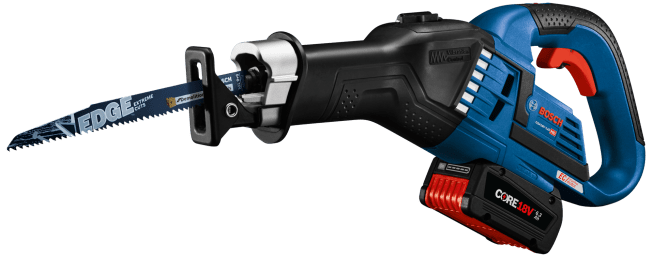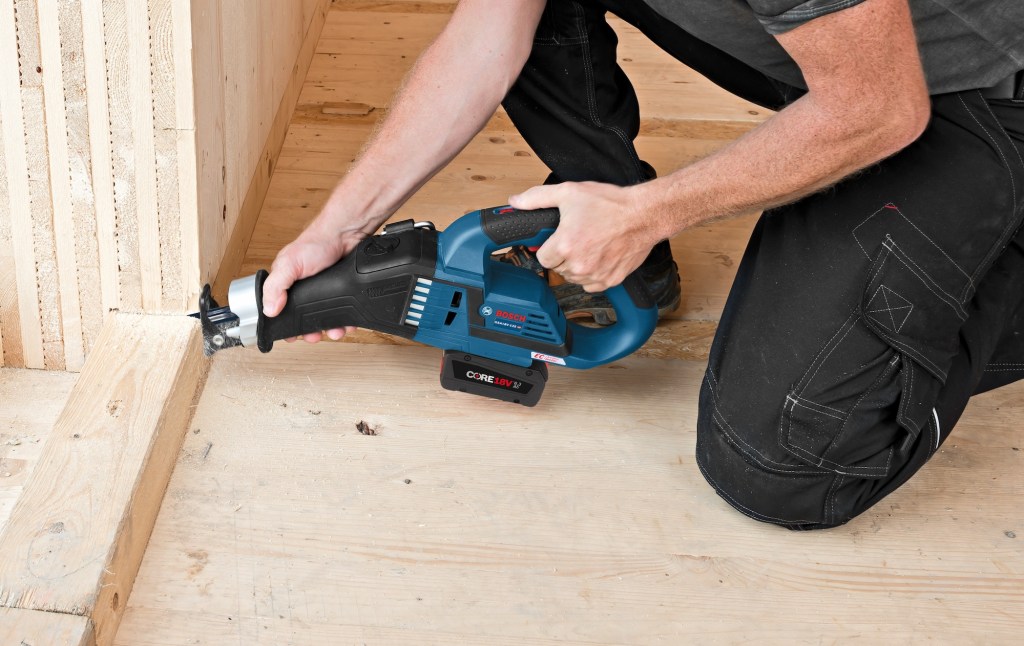The Bosch GSA18V-125 18V cordless reciprocating saw is designed to be more ergonomic than the saws you’re used to using. I used it briefly at a trade show last winter and was impressed by how smooth and powerful it felt. While I made only a couple of cuts with it, I got the impression that it’s a serious contender as a replacement for a corded saw.

Bosch said that it re-positioned the handle and nose and extended the handle’s gripping surface, as a way to offer more leverage and better working angles while taking pressure off users’ hands. I made cuts at waist-height, and in that position, the saw did feel comfortable. I wondered how it would fare when working overhead, though—and if the trigger would still be accessible should I try to hold the saw towards the handle’s bottom.
With three orbital settings (0,1,2), a dial for setting the max speed, and a variable-speed trigger, you can fine-tune how aggressively the saw cuts. It produces 0–2,500 strokes per minute with a 1 1/4-inch stroke length and is outfitted with an oversized rafter hook, an adjustable shoe, and large blade-change mechanism that’s operable even for gloved hands. The EC brushless motor is designed to be more efficient and last longer than previous 18-V motors, and an internal counterbalance system reduces vibration. The saw’s electronics offer overload protection separately for the battery and the motor so that they won’t overheat, and monitor the load to maintain constant speed. Two LED lights—one on each side of the blade—illuminate the work surface.
Though the saw will run on any of Bosch’s 18V batteries, Bosch recommends the CORE18V platform for performance on par with a corded recipe. The kit includes a CORE18V Lithium-ion 6.3-Ah battery, an 18V Fast Charger, two 6-inch bi-metal blades, and a carrying case. Cost: $400 (kit); $300 (tool only).
